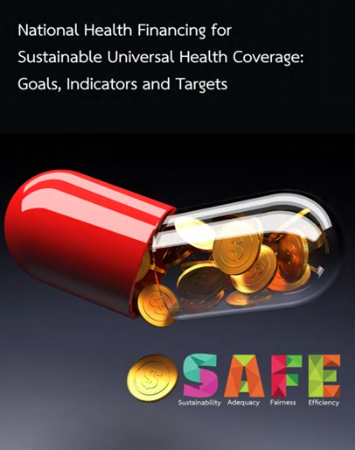National Health Financing for Sustainable Universal Health Coverage:Goals, lndicators and Targets(SAFE)

Preface
The Universal Health Coverage has covered every Thai citizensince 2002. After 13 years of implementation, there are severalimportant achievements:We invested 4.6% of our GDP on health. Although this figure is not that high as compare to other countries at the same level of
economic development, it is more than half a trillion Baht or $US 14 billions. The government investments contribute 80%, which is around 17% of general government spending. This is the evidence to show the high public commitment to UHC. The UHC has resulted in very low ‘unmet needs’ comparable to the OECD countries. The catastrophic illnesses and poverty from medical bills were reduced to near zero.
The Thai UHC has been globally recognized as a ‘good practice’. The Thai Prime Minister was invited to present the case at the UNGA, together with the Japanese PM, in September 2015.
Nevertheless, with high public investment, there is a constant challenge of ‘financial sustainability’ and whether the Thai citizens should contribute more to the UHC, based on various ‘cost sharing’ models.
This report aims at responding to such a challenge based on evidences and experiences in Thailand and internationally, including extensive participation of experts and all stakeholders.
The committee expects to see that the four proposed goals of S-A-F-E will soon be the ‘national health financing goals’ which sticks into the mind of all Thais. All partners and stakeholders would collectively and constructively implement the UHC, based
on SAFE goals, to achieve more social equity and sustainability of the systems.
